The Best Guitar Multi Effects Pedals / Processors
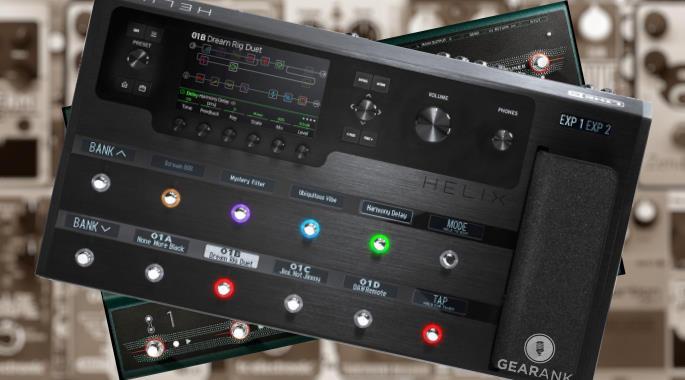
Author & Contributors
Alexander Briones
I have been writing about and researching music gear for many years, all while serving as a music director at my local church. I engage in guitar playing and singer-songwriter stints, in addition to mentoring young musicians and teaching guitar and bass.
The Best Compact Guitar Multi Effects Pedals
These are compact and affordable multi-effects pedals that have impressed guitarists the world over. Ideal for beginners, but also great for experienced players who are working with a limited budget or who want to downsize their rig.
Zoom G1X Four
Cons
- Limited to 5 simultaneous effects
Pros
- Lots of features for the size
- Compact and portable
- Good tones, including high gain ones
- Versatile parameter tweaking
The Zoom G1x Four comes from a long line of compact multi-effect pedals from Zoom. The form factor that started with the Zoom 505 continues to this generation. The G1X Four retains the two-pedal setup popularized by its predecessor and obviously gives a nod to them with the aesthetics.
Similarities end there however, as the Zoom G1X for runs on an entirely modern engine. And this new engine allows for a wider selection of over 70 effects along with 13 amp and cabinet models. You can only mix and match up to five of these effects, which is a bit limited, but given the pedal's size and cheap price, it is still quite impressive in terms of value and portability. And it's not just about quantity, because the sound you can get is quite good, even in the high gain range. Just don't expect it to be as clear and high-def as more expensive processors.
With so many features, Zoom was able to make the G1X relatively intuitive to use, making it a good starter multi-effects pedal, and a good trainer for learning about different effect types, their parameters and their placement in your guitar signal.
As is the case with most multi-effects pedals, built-in presets don't showcase the unit's capabilities. You'll get better results when you learn how to tweak the pedal for your preferred tones.
It's ancestor, the Zoom 505 paved the way for the compact digital multi effects market today, it found itself in the gigbags of a lot guitarists. The G1X Four continues from this legacy by providing great sounds, great effects and great portability all within reach of even the most budget-conscious musician.
Specifications
- Effects: over 70 built-in effects
- Amp Modeling: 13
- Presets: 50
- Footswitches: 2
- Input: 1 x 1/4"
- Output: 1 x 1/4"
- Extra Features: Can be Battery Powered (4 x AA for 18 hours operation) or USB powered, Chromatic Tuner
- USB: USB (For Update and Power)
- Dimensions:156 mm (D) × 216 mm (W) × 52 mm (H)
- Weight:1.34 lbs
| Website | Source | *Rating Value |
| Inside Audio | Rik Blom | 90/100 |
| YouTube | Chief Sweet | 100/100 |
Demo
Nux MG-400
Cons
- Not meant for hard stomping
Pros
- Realistic sounding White-Box algorithm
- Built-in IR response management
- 10 independent moveable signal blocks
- Portable and affordable for what it can do
For the price, the Nux MG-400 offers quite the tone quality and flexibility. It utilizes 2 powerful DSP chips that run their "White-box" amp modeling and effects algorithm.
This algorithm allows for more amp-like tone and response, compared to similarly priced multi-effects units. Tweaking parameters affect others, much like how real amps behave, and this analog like feedback results in more genuine sounding tones. While it won't beat more expensive processors, it does come close, and at just a fraction of the price. And speaking of price, the Nux MG-400 also comes with IR (Impulse Response) loading capability, which further expands its already impressive value. It even has bass amp models and cabinets, along with acoustic simulation IRs.
Each preset comes with 3 "scenes" which allow for more complex setups that are easy to trigger. The pedal has 10 independent moveable signal blocks, which opens up your tone options by a large margin, considering the number of effects and parameter variations available. Other nifty features include USB recording, and there's a software editing options that makes tweaking easier to do.
All these features are packed in a compact and portable unit. Given its lightweight design, this unit is not meant for hard stomping.
Thanks to the Nux MG-400, you can have good sound and expansive tone options without breaking the bank. Definitely worth checking out.
Specifications
- Effects: 48 built-in effects
- Amp Modeling: 25 Guitar, 1 Bass, 1 Acoustic
- IR: 25 Guitar cabs, 8 Bass cabs, and 3 Acoustic IRs
- Presets: 64 Factory Presets, 3 Scenes per Preset
- Footswitches: 3 with 1 x Exp Pedal
- Input: 1 x 1/4", 1 x 1/8" (Aux)
- Output: 2 x 1/4" (L/Mono, R), 1 x 1/8" (Headphones)
- Extra Features: Can be Battery Powered (4 x AA for 18 hours operation) or USB powered, Chromatic Tuner
- USB: Type-C (Recording, Firmware Update, Software Editor)
- Dimensions:160 mm (D) × 289 mm (W) × 71 mm (H)
- Weight:2.03 lbs
| Website | Source | *Rating Value |
| YouTube | Rob Chapman | 96/100 |
| YouTube | Leon Todd | 94/100 |
Demo
Line 6 HX Stomp
Cons
- Controls limited compared to the Helix floor
- Steep learning curve
Pros
- Compact yet feature rich
- Good quality amp modeling and effects
- Great sounding ambient effects
- Good mid to high gain tones
Carrying over tech from the flagship Helix line, the HX stomp features a single SHARC ADSP-21469 processor (the more expensive Helix has two) that provides all the processing power needed for this compact, feature rich multi effects pedal.
For those who want to get started with great tones right away, the HX Stomp has 126 base presets out of the box that can be fully edited to your tastes. For more hardcore tweakers, the HX stomp allows for deep editing of parameters, including the virtual amp's tubes "sag" in response to playing. Tones are up to par with its bigger sibling, but with some limitations effect combinations and parameter control.
The HX stomp includes 300+ effects, amps and cabs with in depth parameter tweaking all in a stompbox format no bigger than a paperback novel. And this blend of portability and versatility is a great fit for those who want a small yet flexible guitar processor. It's main strength are its mid-gain tones and wide ambient textures that work great in worship settings. But it also has good enough high-gain tones that rock and metal players appreciate.
Given the sheer amount of tools and parameters, learning all the parameters can be overwhelming at first, but diving through it's features will let you get more out of the pedal.
The Line6 HX Stomp is a deceptively deep piece of gear that delivers a complete digital rig's worth of features in a small package. Get it if you're a tonechaser and tweaker at heart.
Specifications
- Effects: 200+ (8 Simultaneous)
- Amp Modeling: 80+ Amps, 40+ Cabinets
- Presets: 126 (42 banks x 3 presets), 3 Snapshots per preset
- Footswitches: 3
- Input: 2 x 1/4" (L/mono,R), 2 x 1/4" (L/R, aux in)
- Output: 2 x 1/4" (L/mono,R), 1 x 1/4" (stereo send)
- Extra Features: Chromatic Tuner, IR support, Looper, 2.4" full-color display, MIDI switching capability, USB audio interface with re-amp capabilities, FX Loop
- USB: 1 x Type B (8 x 6)
- Dimensions: 7.01" x 4.96" x 2.6"
- Weight: 1.75 lbs.
| Website | Source | *Rating Value |
| Sound on Sound | Paul White | 94/100 |
| MusicRadar | Alex Lynham | 90/100 |
| Guitar World | Chris Gill | 94/100 |
Demo
The Best Guitar Multi Effects Processors
These are what the market considers as the best guitar processors, as expected many of them are flagship models from familiar big name manufacturers.
Boss GT-100
Cons
- Bulky and heavy
- Mediocre software editor
Pros
- Ability to create virtual amps and cabinets
- Boss quality effects and amp modeling
- Tank tough and reliable
- Classic footswitch configuration
At the core of this guitar processor is Roland / Boss' COSM technology, which gives the unit over 25 amp models and 44 effects. While the number of effects may not be as many compared to recent releases, others don't have the same control and sound quality that the GT-100 provides.
Speaking of control, instead of merely choosing your preferred amp, this processor lets you custom build your virtual amp and cabinet, an interesting feature that allows for even more freedom in crafting your own tones. The downside to this feature is that it's not as intuitive, but it gets easier with experience. Another nifty feature is the ability to assign effects to its many footswitches, making the unit behave much like a regular pedalboard. The GT-100 also comes with polyphonic tuning and USB recording.
Boss is known for reliability and practicality, and these apply to the GT-100, it will last you quite a long time, and it does the job consistently well. This durability also translates to being quite bulky and heavy, so this is not ideal for minimalist set ups. Note that the software editor does not do the GT-100 justice, especially when compared to newer processors.
If you're looking for a tried and tested multi-effects processor, then get the Boss GT-100. Given the company's reputation for durability and product longevity, the real challenge is not letting it outlast your interest in playing.
Specifications
- Effects: 44
- Amp Modeling: 25+
- Presets: 400 (200 factory + 200 User)
- Footswitches: 8 + Expression Pedal
- Input: 1 x Instrument, 1 x TRS Male 1/8" (aux), Footswitch
- Output: 2 x 1/4" (main), 1 x TRS 1/4" (phones)
- Extra Features: Tuner, Amp Customize, OD Customize,
- USB: Editing, Audio Interface
- MIDI: In/Out/USB
- Dimensions: 4.06" x 21.38" x 10.69"
- Weight: 10.625 lbs.
| Website | Source | *Rating Value |
| YouTube | RickyTickyTV | 94/100 |
| Music Radar | Trevor Curwen | 90/100 |
Demo
Line 6 Helix LT
Cons
- Limited to guitar input
- No Aux input
Pros
- High-fidelity effects
- Responsive and realistic amp models
- Allows for personalized settings
- Versatile amp, cab and effects combinations
Being the smaller and more affordable version of the Line 6 Helix Floor, Helix LT makes Line 6's high-end digital sound processing technology more accessible and affordable.
It features the same dual DSP HX modeling engine that replicates minute details of amps and effects, improving on the already impressive modeling capabilities of their POD HD line.
With over 100 effects, there's really no shortage of virtual stompboxes to play with, while the unit's complex signal routing capabilities allow for a wide variety of effects combination, along with panning and double tracking for Haas Effect implementation. Add to this Helix' acclaimed amp modeling features, which let you mix and match 62 amp, 37 cabs and 16 mics. If that's not enough, you can also tweak the parameter of amp models to further personalize your sound.
Tone is really what makes the Helix LT stand out over other options. Many of the amp models are responsive and sound good. The included effects also have great definition, something that you only expect from premium stompboxes. Tweaking the controls also provide expected results, with parameters interacting with each other organically, much like the analog device they are modeled from.
Line 6 designed the interface to be simple yet intuitive, courtesy of its color LCD display and colored LED rings. And it does a good job of simplifying setups and workflows, they also make your settings easier to monitor.
Being the LT version, input and output options are quite limited, it only has a single guitar input, and it doesn't have an aux input.
If you're looking for a powerful guitar processor that's streamlined and reasonably priced (at least compared to others with the same feature set), then the Line 6 Helix LT is for you.
Specifications
- Effects: 104
- Amp Modeling: 62 amps, 37 cabs, 16 mics
- Presets: 1024
- Footswitches: 12 (Touch Sensitive) + Expression Pedal
- Input: 1 x 1/4", 2 x 1/4" (FX Returns)
- Output: 2 x XLR, 2 x 1/4", 1 x 1/4" (headphones), 2 x 1/4" (FX Sends), 1 x XLR (AES/EBU, L6 link)
- Extra Features: Dual DSP HX modeling engine, Touch-Sensitive Footswitches, 60-sec Looper, Compatibility with Variax and Line 6 Amps
- USB: Editing, 8in/8out USB Audio Interface
- MIDI: In, Out/Thru
- Dimensions: 3.7" x 20.9" x 12.45"
- Weight: 12.45 lbs.
| Website | Source | *Rating Value |
| YouTube | Jeff Pauge | 90/100 |
| MusicRadar | Trevor Curwen | 90/100 |
Demo
Line 6 Helix Floor
Cons
- Bulky and heavy
- Steep learning curve
- Steep price
Pros
- Long list of amp models, effects and features
- Great sounding tones, and realistic response
- Regular software updates by Line 6
- Sets the bar high in terms of versatility
Line 6 continues to dominate in the world of floor-based guitar processors, with their flagship unit Helix Floor leading the charge. It combines up-to-date amp and effects modeling technology with extensive input/output options, resulting in a true, jack-of-all-trades processor that works great in both live performance and studio recordings.
At the core of this pedal is the Line 6 HX technology, which emulates the behavior of actual amp and stompbox components. This means that instead of merely copying the sound, it recreates pedal or amplifier components in digital simulation, allowing the models to respond to guitar tone and adjustments much like the real thing. And this realistic response impresses many pros, who can now reserve their expensive amps for special use, and use the Helix Floor as their main gigging gear. There's no denying its popularity especially among church musicians.
While it originally had 70 effects, firmware updates have raised this number to over 200, which is more than enough to keep you busy for months, if not years. Amp, cab and mic models were also increased to 115. Since Line 6 is well known for providing updates, it is reasonable to expect more expansions in the future. With the new firmware updates bumping the effects and amp models beyond the initial offering, Line 6 has only been adding value to the Helix Floor over the years.
It does everything that the Helix LT can, with some extras, most notable of which is the LED scribble strips for labeling each footswitch. The Helix Floor also comes with expanded input/output options to work with mics and other instruments.
Given all the features, the Helix Floor takes up considerable space, and is quite heavy. It is also above the budget of hobbyists and average musicians, but those who saved up for it have good things to say. You also have to exert effort in learning the ins and outs of its software, to make the most out of this best guitar pedal.
If you're looking for one of the best multi-effect pedals that money can buy, then get the Line Helix Floor. Despite being feature packed, filled to the brim with tone and tweakable to your heart's content, it's still priced lower than other pro-tier modelers. With the latest firmware update, the Helix Floor is more versatile and powerful than ever.
Specifications
- Effects: 200+ effects (Helix & Legacy combined, latest firmware), Up to 32 simultaneous FX (DSP permitting)
- Amp Modeling: Over 100 Amp, Cab and Mic Models (latest firmware)
- Presets: 1024 (8 setlists with 32 banks x 4 presets)
- Footswitches: 12 + Expression Pedal
- Input: 1 x 1/4", 1 x XLR, 1 x 1/4" (Aux), 4 x 1/4" (Ext Control), 4 x 1/4" (Return)
- Output: 2 x XLR, 2 x 1/4", 1 x 1/4" (Headphones), 4 x 1/4" (Send)
- Digital Inputs: 1 x S/PDIF, 1 x RJ45 Variax in
- Digital Outputs: 1 x S/PDIF, 1 x XLR (AES/EBU)
- MIDI: In, Out/Thru
- Extra Features: Dual DSP HX modeling engine, LCD scribble strips, Touch-Sensitive Footswitches, 60-sec Looper, Compatibility with Variax and Line 6 Amps
- USB: Editing, 8in/8out USB Audio Interface
- Dimensions: 3.58" x 22.05" x 11.85"
- Weight: 14.6 lbs.
| Website | Source | *Rating Value |
| Premier Guitar | Joe Gore | 90/100 |
| Music Radar | Trevor Curwen | 100/100 |
Demo
Things to Consider When Buying a Multi-Effect Pedal
- As the multi-effects label implies, more is generally a good thing, as long as you don't spend too much time obsessing over each one to the point that it hinders your productivity and practice.
It is also important to consider the maximum number of effects that can run simultaneously, which are usually based on effect group types or "blocks". This means that you usually can only have one modulation, one delay and Reverb, one drive (Audio Distortion, overdrive, fuzz) etc in a preset. Advanced processors allow for more freedom which include combining same type pedals, series/parallel routing, pre-post amplifier routing and many more. They also allow for more freedom in choosing effects combinations like combining Spring Reverb with other Reverb types.
While they allow for more ways to craft your tones, these processors also require more tweaking time and are usually more expensive.
- Since digital effects use DSP or Digital Signal Processing, manufacturers have made the most of the processing power by adding amp modeling features. To the point that amp modeling has become a standard feature, and has even overtaken effects in popularity. If you already have a good amplifier, then amp modeling is not important, but it's still a good addition for the extra versatility amp modeling provides. Good amp modeling also lets you enjoy Amp to Headphones tone.
- Footswitches allow for handsfree control of your multi-effects pedal, so having more of them is good, as long as you're OK with the added bulk and weight that they require. Some processors have a stompbox mode feature that lets you utilize footswitches much like a traditional pedalboard, but most of the time the switches serve as preset selectors, along with other secondary uses.
As mentioned above, the versatility of multi-effects requires complexity, and complexity requires longer learning times. Thankfully, manufacturers have been continually improving the control interface and workflow of their units, so it's never been easier to setup multi-effects units. Bigger display screens and good control positioning are important, but they also add to the overall size and bulk, so don't expect them on smaller units. Some even go as far as adding small LED scribble scripts to the footswitches, which removes the need to memorize or list down your presets.
- Adding to their already good value, most multi-effects come with built-in features that are essential to gigging and practicing, first of which is a built-in tuner. Looping is also a good feature to look for, thankfully it now comes standard on many units. Having the ability to record straight to a computer is another handy features that should be considered, as well as the ability to edit the settings via your computer or mobile device. Built-in metronome/rhythm is also a nice plus, especially for those who want to take their skill to the next level.
- For most applications, all you really need is a guitar input, and an output that you can plug to an amplifier or PA system. Still, it doesn't hurt to have extra input/output options, like a mic XLR input (for vocalists who play guitar), an aux input (for practicing with your favorite tracks), headphones out (doubles as Headphone Amp for quiet practice and tweaking), stereo output, and more. Powered PA speakers, and other full range speakers work great with guitar processors, because of the extra high-end they provide. The downside to this setup is you lose the old school feel of the amp moving actual air around you. These days, many guitarists opt to use in-ear monitors on stage, which allow them to better hear their playing. Guitar processors are also useful for Reamp purposes.
- More features require more components, and improved durability requires a stronger chassis, all of which add to the bulk and weight of a guitar processor. In the end it will be up to you to balance your budget and needs to your preferred portability. In line with this, we've provided the weight and dimensions, for easier reference and comparison.
- We highly recommend buying a good carrying case or at least preparing a fitting bag for your unit, since they can protect them from handling and environmental damage. They also add to the overall convenience, especially if they are custom fit for your unit and if they have enough pockets for the cables and tools that you carry.
Effects
Amp Modeling
Footswitches and Control Interface
Extra Features
Connectivity
Portability (Weight and Size)
Case / Carry Bag
Best Guitar Multi Effects Pedal Selection Methodology
The first edition was published in 2017.
We limited the scope of this guide to floor-based multi-effects units, and we also only included only those with different effect types/blocks excluding those which have only variations of the same base effect such as multiple modulation effects. For this edition, we ended up with a total of 45 multi-effects pedals on our short-list which you can see in our database. We collated relevant reviews, ratings, forum discussions, and expert opinions about each model and fed them into the Gearank Algorithm which gave us the rating scores our of 100 that we used to narrow down the list to just the top picks - over 26,400 sources were analyzed during this process. We then selected the highest rated options in two categories: compact multi-effects pedals (since many are looking for them), and medium to large size ones to recommend above. For more information about our methods see How Gearank Works.
About the Author and Contributors
Here are the key people and sources involved in this guide's production - click on linked names for information about their music industry backgrounds.
Lead Author & Researcher
Alexander Briones
I have been writing about and researching music gear for many years, all while serving as a music director at my local church. I engage in guitar playing and singer-songwriter stints, in addition to mentoring young musicians and teaching guitar and bass.
My first ever multi-effects was a Zoom 3030, and interestingly, it is still working well to this day. I have since used and tried other guitar processors from Zoom, Boss, DigiTech and Line 6, and I am impressed at how sound quality has been advancing. Guitarists have it better today, with quality guitar processors that can be had at different price points.
Contributors
Raphael Pulgar: Supplemental writing.
Jason Horton: Editing and Illustrating.
Media
Main/Top Image: By Gearank.com using photographs of the Line 6 Helix Floor and Kemper Profiler Stage.
The videos have been embedded in accordance with YouTube's Terms of Service.
The individual product images were sourced from websites, promotional materials or supporting documentation provided by their respective manufacturers.



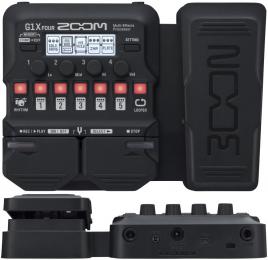
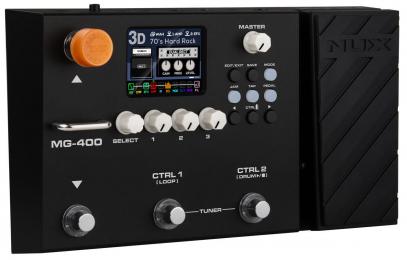
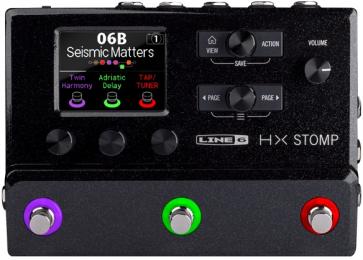
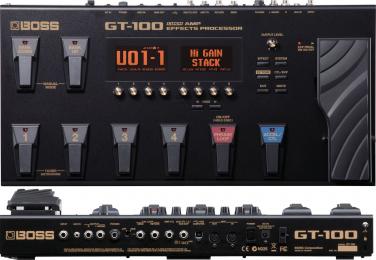
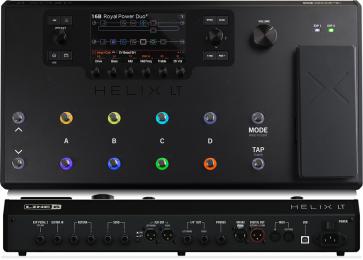
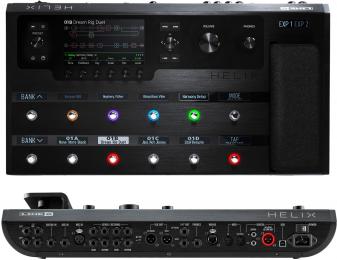
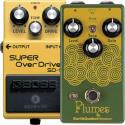
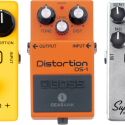
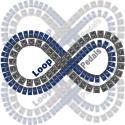
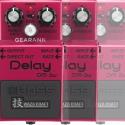
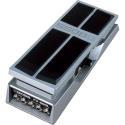
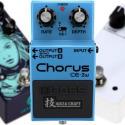
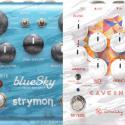
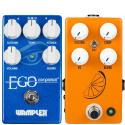
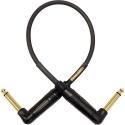

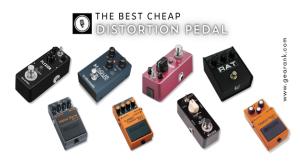
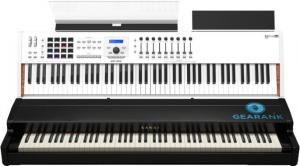
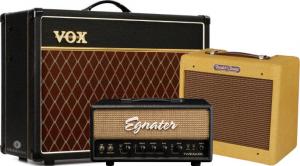
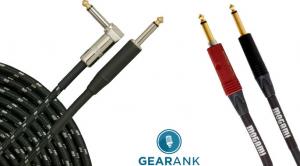
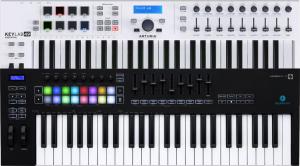
Comments
The following effects units
Submitted by Jason Horton on
The following effects units were removed from the recommended list when we published the December 2022 Edition:
Publication of our July 2021
Submitted by Jason Horton on
Publication of our July 2021 Edition resulted in the following models coming off the recommended list above:
As part of our July 2020
Submitted by Jason Horton on
As part of publishing our July 2020 updated edition, the following were removed from our recommended list above, but you can still see our analysis of them:
We have removed the Fractal
Submitted by Jason Horton on
We have removed the Fractal Audio AX8 from the recommended list above due to it no longer being available.
You put a link to come here
Submitted by Steve (not verified) on
You put a link to come here from the Digitech RP360 XP review, telling us you no longer recommend the RP360XL pedal because THESE are better. I don;t think that is a fair statement. Several of these compact pedals do not have NEAR the features. Some of THESE are not "compact" MFX pedals,and some costing 5 times or more. About the only one in the same class is the Boss GT1. I think it's unfair for you to blatantly steer everyone away from the Digitech and into such units as fractal and helix models.
Today we removed the
Submitted by Jason Horton on
Today we removed the following effects pedal from our recommended list above due to a lack of availability, but you can still read our analysis of it: Zoom G1Xon.
As a result of our November
Submitted by Jason Horton on
As a result of our November 2018 update the following effects units came off our recommended list, but you can still read our analysis of them:
Would like to purchase a
Submitted by Terry Studd (not verified) on
Would like to purchase a Fractal FX 8 on a monthly payment basis, I live near Calgary, Alberta, Canada
We don't sell any of the
Submitted by Jason Horton on
We don't sell any of the products we recommend, you'll have to contact Fractal Audio directly.
Due to a lack of availability
Submitted by Jason Horton on
Due to a lack of availability the following effects unit has been removed from the recommended list above but you can still read our analysis at DigiTech RP1000.
Nothing on model zoom G3xn
Submitted by Luc (not verified) on
Nothing on model zoom G3xn and G5n ?
Both of them were short
Submitted by Jason Horton on
Both of them were short-listed and examined in detail but neither of them had high enough ratings for us to recommend them. You can see their ratings in the Music Gear Database.